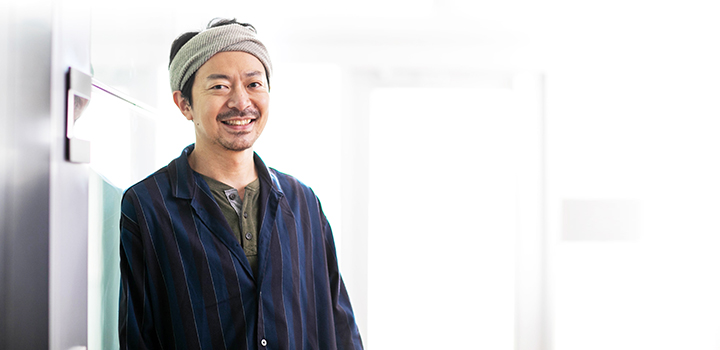Kazufumi Hosoda

Main Lab Location:
CiNet (Main bldg.)Email:
hosodak at nict.go.jpHomepage:
https://hosodag-cinet.jpn.org/We study brain dynamics as a hierarchical biosystem to understand and utilize the design principles of brain functions.
Our brain can learn and make decisions, try to keep normal, and come up with new idea even without any light or sound inputs. The brain thus is not just an information processing system that responds to inputs, but also a dynamical system that constantly changes maintaining homeostasis as a biosystem. Such a brain is integrated in the hierarchy of life (e.g., molecules, cells, tissues, organs, individuals, populations, communities, ecosystems…) and is constrained from both the higher and lower hierarchical levels as a requirement for being a biosystem. We believe such requirements for being a biosystem hold the key to the design principles of brain functions. For example, even unicellular organisms are high-dimensional dynamical systems, however, their state changes are not free but strongly constrained to extremely low dimensions. This low dimensionality is thought to be due to two requirements as a biosystem: homeostasis and adaptability. Such dimensionality reduction is essential for high-dimensional dynamical systems to process information, and the brain may rather utilize this constraint inevitably. In addition, at the molecular or cellular levels, there are constraints that the communication must function at a low signal-to-noise ratio (~10), where biosystems would rather utilize the noises, which leads to high energy efficiency. However, it is not clear how such constraints for being a biosystem are integrated into the design principle of brain functions.
We model the brain as a dynamical system with information processing functions by adding the viewpoint of constraints as a biosystem to the knowledge of rapidly developing brain science and computational science. The current development in AI field is a successful example of utilizing the hierarchy of life as an algorithm, and we will focus on more dynamic and wet aspects.
For us humans, the understanding of the brain is directly linked to what humans are, what self is, and what life is. Of course, it will also lead to various applications such as super energy-saving AI if we can model the design principle. The challenges are piled up and the demands are enormous; how interesting and exciting this field is!
Selected Publications:
Kosuke Tomimatsu, Takeru Fujii, Ryoma Bise, Kazufumi Hosoda, Yosuke Taniguchi, Hiroshi Ochiai, Hiroaki Ohishi, Kanta Ando, Ryoma Minami, Kaori Tanaka, Taro Tachibana, Seiichi Mori, Akihito Harada, Kazumitsu Maehara, Masao Nagasaki, Seiichi Uchida, Hiroshi Kimura, Masashi Narita, Yasuyuki Ohkawa (2024). “Precise immunofluorescence canceling for highly multiplexed imaging to capture specific cell states.” Nature Communications 15: 3657
Kazufumi Hosoda, Shigeto Seno, Rikuto Kamiura, Naomi Murakami and Michio Kondoh (2023). “Biodiversity and Constrained Information Dynamics in Ecosystems: A Framework for Living Systems.” Entropy 25(12): 1624. (Feature Paper)
Kazufumi Hosoda, Shigeto Seno and Tsutomu Murata (2023). “Simulating Reaction Time for Eureka Effect in Visual Object Recognition Using Artificial Neural Network.” IIAI Letters on Informatics and Interdisciplinary Research 3. 60, (KICSS Best Crowd Award)
Kazufumi Hosoda, Keigo Nishida, Shigeto Seno, Tomohiro Mashita, Hideki Kashioka, Izumi Ohzawa, “It’s DONE: Direct ONE-shot learning with Hebbian weight imprinting”, arXiv, Art. no. arXiv:2204.13361, Jun. 2022
Matsuura, T., Tanimura, N., Hosoda, K., Yomo, T., Shimizu, Y., “Reaction dynamics analysis of a reconstituted Escherichia coli protein translation system by computational modeling.” PNAS 114, E1336-E1344, (2017)
Kiyokawa, K., Hatanaka, M., Hosoda, K., Okada, M., Shigeta, H., Ishihara, Y., Ooshita, F., Kakugawa, H., Kurihara, S., and Moriyama, K., “Owens Luis – A context-aware multi-modal smart office chair in an ambient environment.” IEEE Virtual Reality 2012, (2012)
Hosoda, K., Matsuura, T., Suzuki, H., and Yomo, T., “Origin of lognormal-like distributions with a common width in a growth and division process.” Phys Rev E 83, 031118, (2011)
Lab Members:
Komaki Kunishige; Research technician
Keigo Nishida; Collaborative researcher [Postdoc in Riken]
Wataru Miyamori; Collaborative researcher [M student in Osaka-U]
Misako Kimura; Collaborative researcher [M student in U-Hyogo]
Tsutomu Murata; Senior Researcher (Advisor)
Izumi Ohzawa; Invited Specialist (Advisor) [Prof Emeritus in Osaka-U]
Kunihiko Kaneko; Invited Specialist (Advisor) [Prof Emeritus in Tokyo-U, Prof in Niels Bohr Inst]
